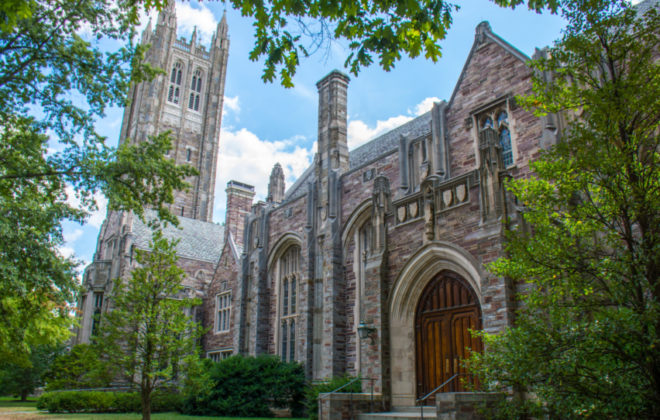What are the Ivy League Schools?
November 3, 2022

The words “Ivy League” likely evoke images of stately Gothic buildings, professors in tweed suits and bow ties, and a hoity-toity student body, most of whom can claim a family affiliation with the university going back to the early 18th century. Yet, the term “Ivy League” did even exist until the 1950s. It only came into being as the name of an athletic conference that was formed at that time. The genesis of the term “Ivy” is even a subject of debate. Many believe it actually derives from the original partnership of four schools, referred to by the Roman numeral “IV”. Regardless of its origins, the term is now part of higher education lexicon. So, what are the Ivy League Schools?
How Many Ivy League Schools are there?
There are eight schools in the Ivy League. They are:
- Brown University
- Columbia University
- Cornell University
- Dartmouth College
- Harvard University
- The University of Pennsylvania
- Princeton University
- Yale University
Ivy League Schools’ Locations
As you can see in the chart below, the Ivy League schools are concentrated in the Northeastern U.S.
| Ivy League School | Geographic Location |
| Brown | Providence, Rhode Island |
| Columbia | New York, New York |
| Cornell | Ithaca, New York |
| Dartmouth | Hanover, New Hampshire |
| Harvard | Cambridge, Massachusetts |
| UPenn | Philadelphia, Pennsylvania |
| Princeton | Princeton, New Jersey |
| Yale | New Haven, Connecticut |
Oldest Ivy League Schools
Looking at the chart below, it is clear that many of the Ivy League schools are among the oldest in the country. Cornell is the clear exception having been founded right at the end of the Civil War. Harvard is the oldest institution of higher learning in the United States. Non-Ivy League Schools like the College of William & Mary, Rutgers University, and the University of Delaware also date back to the 18th century.
| Ivy League School | Year Founded |
| Brown | 1764 |
| Columbia | 1754 |
| Cornell | 1865 |
| Dartmouth | 1769 |
| Harvard | 1636 |
| UPenn | 1755 |
| Princeton | 1746 |
| Yale | 1701 |
Is Stanford Ivy League? What about Duke and MIT?
These are extremely common questions students ask, and the answer is “no”. While the eight Ivy League colleges and universities are among the best in the country/world, being in the Ivy League is not actually a measure or ranking of any kind. There are many schools that are considered to be Ivy-Equivalent in terms of selectivity, prestige, and quality. Universities fitting this description include:
- Duke University
- University of Chicago
- Stanford University
- Caltech
- Northwestern University
- Vanderbilt University
- Johns Hopkins University
Additionally, there are a number of elite liberal arts schools that are comparable to the Ivies in many ways. Schools with single-digit acceptance rates that attract valedictorians from around the globe include:
- Amherst College
- Pomona College
- Swarthmore College
Altogether, these institutions are among the best non Ivy League schools in the United States. Of course there are many other phenomenal institutions not mentioned here.
Ivy League Acceptance Rates
| Ivy League University | Class of… 2024 | 2025 | 2026 |
| Brown | 7.7% | 5.4% | 5.0% |
| Columbia | 6.2% | 3.7% | 3.7% |
| Cornell | 10.7% | 8.7% | 6.9% |
| Dartmouth | 9.2% | 6.2% | 6.2% |
| Harvard | 5.0% | 3.4% | 3.1% |
| UPenn | 9.0% | 5.9% | Not available |
| Princeton | 5.6% | 4.4% | Not available |
| Yale | 6.5% | 5.3% | 4.5% |
For a more complete look, visit our Class of 2026 Ivy League Acceptance Rates.
Do I need to go to any Ivy League school to be successful?
No. The answer is literally that short and sweet. While an incredible amount of attention is paid to these eight universities, there are hundreds of schools that can likely (depending on your circumstances) take you where you want to go. Countless quality public and private colleges send graduates to top law, medical, and graduate schools each year. Major employers recruit from many quality colleges, not just those in the Ivy League.
Of course, there are situations where prestige can be a factor. Many Wall Street firms recruit primarily from Ivy and Ivy-equivalent schools. If you want to be a Supreme Court Justice or President of the United States, then your odds would improve attending an Ivy League School. However, the vast majority of future career pathways are attainable from any number of undergraduate beginnings.
For a look at the schools that serve as Top Feeders to desirable graduate/professional schools and top companies, we recommend two sources. The first is our guidebook: Colleges Worth Your Money. This book includes career and graduate school outcomes for 200 of the nation’s top colleges. The second source is our Dataverse which offers free Top Feeder and Producers lists including:
- Top Feeders – Business School (MBA)
- Top Feeders – Engineering
- Top Feeders – Entrepreneurship
- Top Feeders – Law School (JD)
- Top Feeders – Medical School (MD)
- Top Feeders – News/Media
- Top Feeders – Ph.D. Programs (Ph.D. Productivity)
- Top Feeders – Tech
- Top Feeders – Wall Street
For more admissions tips on each school, visit our blogs covering How to Get Into:


